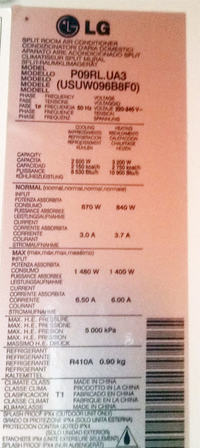Hello. I would like to know what fuses to secure the connection of the air conditioning to electricity.
At present, the air-conditioning was connected to the electricity by a simple plug (air-conditioning, wall-mounted, air-conditioner, but air-conditioning, together with the outdoor unit).
I did so in order to turn off the air conditioning from the socket in the event of a long absence (especially before storms).
Currently, I would like to connect the air conditioning also to the socket, but on the way to the device itself, secure it with a fuse / fuses - i.e. a small fuse box. I can't connect the air conditioning directly to the fuse box - technically I don't have that option.
I'm not an expert in this field, but I like to play with the flow and so far I haven't burned anything
In the event of overvoltage, voltage surges, I would like to protect the air conditioning device against failure (e.g. when one of the devices connected to the sockets in the room short-circuits - I would not want the AC to suffer from this).
And now a question for you - what fuses to use (type and power)? I will rather be able to connect it (I think so).
My air conditioning is:


Any advice?
Ps. I don't want an answer like:
don't do it because you will break it or call an electrician
I am not describing everything on the forum here in order to delegate the work to someone else.
I want to do it myself at my own risk.
At present, the air-conditioning was connected to the electricity by a simple plug (air-conditioning, wall-mounted, air-conditioner, but air-conditioning, together with the outdoor unit).
I did so in order to turn off the air conditioning from the socket in the event of a long absence (especially before storms).
Currently, I would like to connect the air conditioning also to the socket, but on the way to the device itself, secure it with a fuse / fuses - i.e. a small fuse box. I can't connect the air conditioning directly to the fuse box - technically I don't have that option.
I'm not an expert in this field, but I like to play with the flow and so far I haven't burned anything
In the event of overvoltage, voltage surges, I would like to protect the air conditioning device against failure (e.g. when one of the devices connected to the sockets in the room short-circuits - I would not want the AC to suffer from this).
And now a question for you - what fuses to use (type and power)? I will rather be able to connect it (I think so).
My air conditioning is:


Any advice?
Ps. I don't want an answer like:
don't do it because you will break it or call an electrician
I am not describing everything on the forum here in order to delegate the work to someone else.
I want to do it myself at my own risk.


